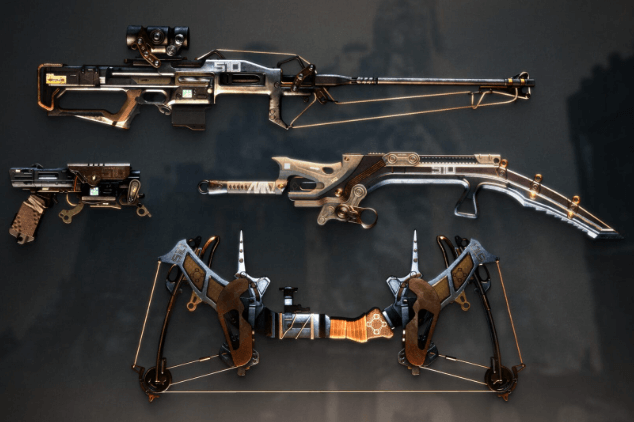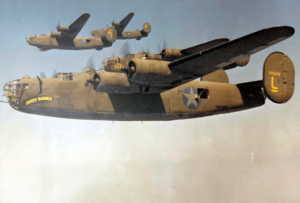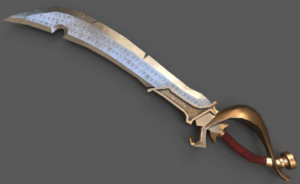World War I brought about the most significant transformation of warfare in world history. The designs of some weapons, such as the Colt 1911, became blueprints for hundreds of descendants.
The chemicals had such a profound psychological effect that it was later agreed that they would never be used in warfare again.
Here is the List of 5 Weapons Used in World War 1
After the advent of gunpowder weapons, rifles became the primary weapon of all infantry. The two main rifles found on the battlefield were relatively similar in design, but each had advantages and disadvantages.
1. Lee enfield
The short magazine Lee Enfield (SMLE) Mk III, affectionately known as the “Smelly”, was the standard rifle issued to all infantrymen in Britain and its colonies. Produced in Birmingham and with designs passed on to other factories later in the war, this rifle was an improvement on a design that had been in use since the late 10th century. This would become the predecessor to similar Lee Enfields in the coming decades.
The Lee Enfield weighed just under 9 pounds and had a barrel length of just over 25 inches. It had a 10-cartridge magazine using .303 caliber ammunition. It was highly accurate at ranges up to 2,000 yards and had a surprisingly high rate of fire for a bolt-action weapon.
Although the Lee Enfield was not suited to muddy trench conditions, the rifle was the second most common rifle in combat. The Americans used this design to build the M1917 Enfield and produced more than 2 million guns for soldiers before the end of the war.
The Lee Enfield continued to be the weapon of choice throughout World War II, only to be replaced in 1957 by the L1A1 automatic rifle.
2. Lewis gun
Automatic weapons capable of firing hundreds of bullets per minute would permanently change the face of combat. Every year automatic machine guns became lighter and more powerful, and attaching them to planes and tanks could be the difference between an army gaining ground and an army decimated.
The Lewis automatic machine gun was widely used by the British Army during World War I, becoming the first popular automatic rifle to be used regularly by a single unit.
The magazine can hold 47 or 97 rounds, panning over a heavy 12.7kg body for troop use, while fixed-deployment versions can be heavier and have a faster rate of fire.
The gun was initially used by a team of seven soldiers, five of whom were dedicated to carrying ammunition. Lewis could fire a dozen magazines before they got too hot to use, and at a rate of 800 rounds per minute, it took very little time.
However, one of the Lewis’s most important advantages was that it could be easily mounted on both aircraft and tanks, making it one of the most versatile and lethal weapons of the war.
Many military strategists consider this rifle to be the most important rifle in the conflict. Because they were so advanced compared to other weapons, there are recorded cases of raiding units where the Germans secured Lewis guns and stockpiled them specifically for distribution to their troops.
3. Model 1898 mouser
The Mauser, also known as the “Gewehr 98”, was the most produced and copied rifle in military history until the invention of the AK-47. It used a five-round internal clip chambered for 7.92mm bullets, weighed 9 pounds, and could easily be fitted with a telescopic sight.
It was much less prone to malfunction and had greater stopping power than the Lee Enfield, but it could only hold half as many cartridges in the clip and its rate of fire was not as high.
German assault troops also used a shorter, lighter version of the 98 called the “Karabiner 98a”, of which over 1.5 million were produced by the end of the war.
4. Vickers
The large .303 caliber Vickers machine gun was one of the most powerful weapons of World War I. Each cartridge belt holds 250 bullets and can be consumed in just 30 seconds. It was too heavy to move quickly, and it took three men to fire a 50-pound gun.
The Vickers was an excellent defensive weapon installed in a semi-permanent position or attached to a tank or airplane. When the British eventually acquired the Lewis guns, they created a new corps specifically for manpower to install and operate the Vickers and older Maxim machine guns.
5. Colt 1911
In the end, what was always attached to them was the soldier’s sidearm. When the rifle jammed, when the enemy got too close, when it seemed safe to put the rifle down, the pistol was just within reach. As semi-automatics became more popular, the history of sidearms changed forever.
In the late 19th century, the U.S. military began looking for the next pistol to issue to its officers. With the success of semi-automatic rifles, they wanted to move away from the revolvers they had relied on in the past. They insisted on using .45-caliber bullets because they were concerned about the stopping power of smaller-caliber guns.
John Browning submitted a design for a Colt semi-automatic that differed little from the M1911 that people buy today. In tests in 1910, 6,000 rounds were fired in one day without a single failure.
Nearly 70,000 M1911 pistols were produced by World War I, but by the end of the war, demand was ten times higher. Perhaps the greatest advertisement for the M1911 came from the actions of one of America’s greatest riflemen, Medal of Honor recipient Sergeant Alvin York. He took part in the Battle of Hill 223 in France in 1918, peppering his fellow troops with deadly fire.
When the Germans attempted to block his sniper fire with a bayonet charge, he pulled out his new Colt pistol and fired six of his seven shots, killing six men. The remaining German soldiers surrendered, not knowing how many bullets they had left.
With the surrender, American forces captured 132 German soldiers with more than 30 machine guns in strategically important positions.
6. Ruger P08
The Luger (Parabellum-Pistole) was the semi-automatic pistol of choice for the German military during World War I. Officially adopted in 1908, it continued to be used with minor design changes after World War II.
The Luger chambered a 9mm bullet (a key reason the U.S. military rejected the design), was much more accurate than other semi-automatic rifles, and could be stock mounted (or modified for automatic fire).
Because the gun was considered a short-range weapon and therefore very dangerous, the Treaty of Versailles placed a condition limiting the number of Lugers the German army could own.
7. Flamethrower
The first modern flamethrower was designed in Germany by Richard Fiedler, but Gábor Szakáts invented the device used in World War I. The Hungarian’s scheme was so destructive that he was added to the list of war criminals convened by France after the war. The “Flammenwerfer” consisted of a single cylinder with pressurization in the lower part and combustible oil in the upper part.
A hose connected to a cylinder can fire oil and ignite in a long flame. Although cumbersome and difficult to operate, the flamethrower was not only highly effective in trench warfare and tunnel clearing, but it was also psychologically terrifying to look at while in use. Flamethrowers were deployed approximately 600 times during the war.




Thanks for giving your ideas with this blog. As well, a delusion regarding the lenders intentions when talking about home foreclosure is that the lender will not take my installments. There is a specific amount of time that this bank will need payments from time to time. If you are as well deep inside hole, they’re going to commonly desire that you pay the payment 100 . However, i am not saying that they will not take any sort of payments at all. When you and the loan company can be capable to work something out, the actual foreclosure procedure may cease. However, in case you continue to neglect payments within the new plan, the property foreclosures process can just pick up where it was left off.